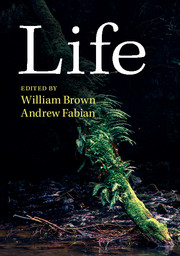Book contents
- Frontmatter
- Contents
- List of figures
- List of tables
- Notes on contributors
- Preface and acknowledgements
- 1 Life and death of a cell
- 2 The spark of life
- 3 From genomes to the diversity of life
- 4 Artificial life
- 5 Life in conflict: soldier, surgeon, photographer, fly*
- 6 Life in the ancient world*
- 7 Life in ruins*
- 8 The after-life*
- Index
- References
7 - Life in ruins*
Published online by Cambridge University Press: 05 September 2014
- Frontmatter
- Contents
- List of figures
- List of tables
- Notes on contributors
- Preface and acknowledgements
- 1 Life and death of a cell
- 2 The spark of life
- 3 From genomes to the diversity of life
- 4 Artificial life
- 5 Life in conflict: soldier, surgeon, photographer, fly*
- 6 Life in the ancient world*
- 7 Life in ruins*
- 8 The after-life*
- Index
- References
Summary
I begin with a thought-experiment. Imagine, to start with, the disappearance of humans from the Earth. We are eliminated, in this scenario, not by means of a nuclear war or other pan-planetary catastrophe, but rather by a Homo sapiens-specific virus, which results in the swift deletion of our species but leaves our built environment intact, and the ecologies of which we are part undisturbed other than by our absence. Imagine, in fact, for the purposes of finessing the counter-factual, that the planet’s last human perished at some point in the late winter of 2012. What then would happen to ‘the world without us’, in Alan Weisman’s phrase (Weisman 2007: 5)? Or rather – for the more precise purposes of this thought-experiment – what would happen to the city of Cambridge without us? How would the city alter over the weeks, months, years, decades and centuries following its abandonment?
Allow me to hypothecate a set of futures for this post-human Cambridge. First and fastest come the hungry fungi, even at that cold time of year. In kitchens and dining rooms, moulds bloom on food left out on sideboards and worktops, spreading their mycelial nets of grey, yellow and green. With no one to chase it away, dust settles in the windless interiors of lounges and bedrooms. Decay has started, but so in its way has stasis. In March, a late spell of winter is cast. Water freezes in pipes, and then a thaw brings floods: ceilings crash down, walls fatten, soffit boards rupture. That summer, fire follows: lightning strikes and gas explosions, leaving cratered holes and husked houses. By August, rosebay willowherb – also known as bomb-weed, because it thrives on carbon-rich soil – flowers on these blackened sites like a pink floral fire.
- Type
- Chapter
- Information
- Life , pp. 124 - 146Publisher: Cambridge University PressPrint publication year: 2014



